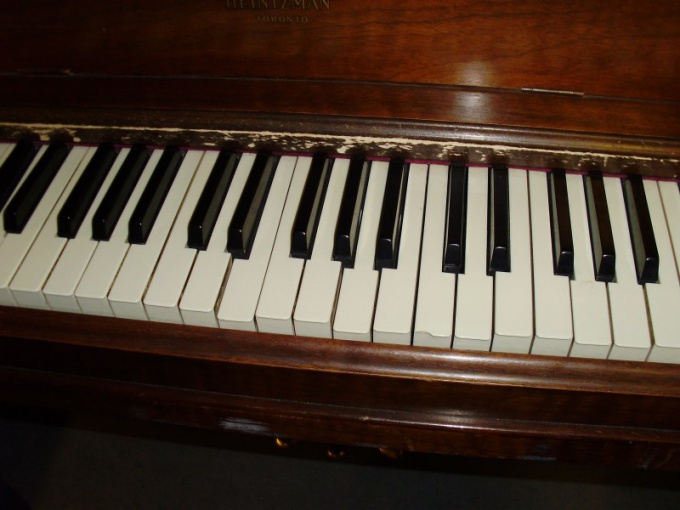Build range
To remember the number of characters, it is best to build the scheme. Any major gamma is based on the same scheme of alternation of tones and semitones. The scale consists of two groups, in the lower part of two tones and a semitone, in the upper three tones and a semitone. Building on this scheme, a C major scale from the sound of "mi, you will get the following scale: e, f sharp, g sharp, La, si, C sharp, d-sharp, mi. That is, in this key four sharp.
The order of appearance of sharps
If you have a table of scales, chords and arpeggios, you probably noticed that the scales are plotted with respect to a certain order. Starts a table with the key of C major, followed by scales with one sharp or flat, that is in g major and f major, then with two key marks etc. Please note that the key characters appear in a certain order. The first f-sharp. This is the seventh stage of the Sol-major. To determine what sign will be next enough of the sound "f-sharp" to build a perfect fifth up. You will get to sharp. It is easy to determine the tone in which this sign appeared. This is the seventh stage, between it and the first step of this range should be a semitone, what is the desired tonality of d major. Following the sharp is situated across the ascending perfect fifth, that is, g-sharp, and the tone in which he first appears, will be a major. On further consideration, you can determine what sound is the seventh degree in e-major. From the sound of "mi" should be postponed semitone down. It will re-sharp.
Place mi-major in the circle of fifths
Learn how to use quarto-Quintum around. This is a common circle, divided into 12 equal parts. The first key is C major. On the right are diesny key on the left flat. In each of the following key one character more. The following diesny the tonality is defined by constructing the ascending pure fifths, flat – descending. Building from a sound "to" tonic triad, you will receive the name of the next diesney tone in g major. The next key is d major, then a major and finally as desired in e major.
Mi-major triad
Find the third and the fifth stage of the mi-majeure. To do this, from the sound of "mi," build the major third. You will receive a sound of "Sol sharp". The fifth step is at a distance of one and a half tones from the third, that is, the sound "si". Thus, a tonic triad in e major consists of the sounds "e," "g-sharp", "si".
